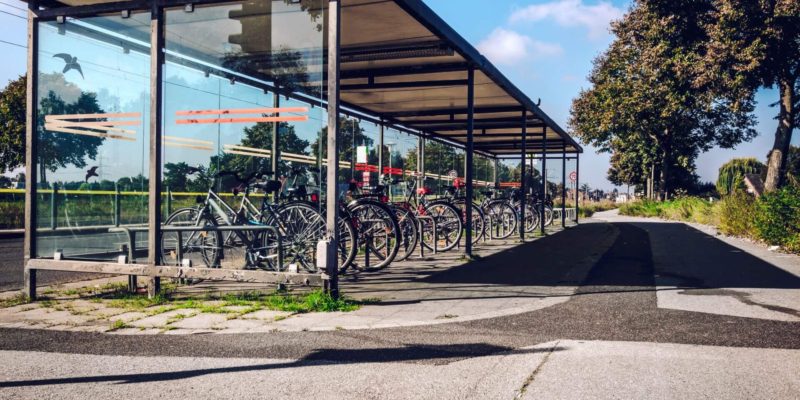The difference between a wall-mounted covered walkway and a free-standing covered walkway is fairly simple. Wall-mounted walkways are fixed to the wall on at least one side, meaning it can run alongside a doorway or building. Alternatively, a free-standing walkway doesn’t require any walls, and can simply join buildings together using one or two sides. Deciding which version is best for you depends largely on what it will be used for:
Uses of wall-mounted covered walkways
School playgrounds
Wall-mounted covered walkways can be installed without having to use any posts or pillars, making them ideal for school playgrounds. Children are renowned for tripping over or bumping into anything possible, so the fewer posts around the playground, the better. It also means that walkways can take up less space, meaning you have a larger surface area to do other things with the playground.
Cycle and trolley shelters
A lot of people may feel more comfortable leaving their bikes in a shelter if it is physically attached to a building, as a wall-mounted covered walkway would be. Similarly, by storing shopping trolleys in such walkways, it is very clear exactly which shop the trolleys belong to, which avoids any confusion when people have to give them back. This is particularly relevant if there is more than one shop in a complex that are lending out shopping trolleys.
Restaurants and bars
Everyone likes to have some food or a drink outside, but it can be difficult in the UK as our sunny season is limited. However, restaurants and bars can get around this issue by installing a wall-mounted covered walkway onto the side of their premises, giving them a handy cover to stretch above the tables that are outside. These can be customised with lights and heaters to look even more impressive.
Uses of free-standing covered walkways
Passages between buildings
There are many instances where covered passageways between buildings are very convenient, especially if you want to keep people dry during the UK’s rainy seasons. For example, some schools now have classrooms in more than one different building. To make the school seem more cohesive, a free-standing covered walkway will act as a passage between these. It’s also useful for places where people are likely to get lost, as you can put up signs for directions.
Many people also decide to install a free-standing covered walkway at home, for example between their house and their garage. They are also useful within hotel complexes or between accommodation blocks.
Commercial services
For many areas that require weather protection or outdoor shade, it is difficult to make guttering extend out from the property. However, a free-standing solution can solve this issue. Freestanding canopies are also useful for protecting wide-reaching areas or those that are at awkward angles, as well as underground drainage.
If you need further advice on whether you are best suited to a wall-mounted or a free-standing covered walkway, feel free to get in touch with Shelter Solutions. Our friendly and professional team are more than happy to provide assistance.

